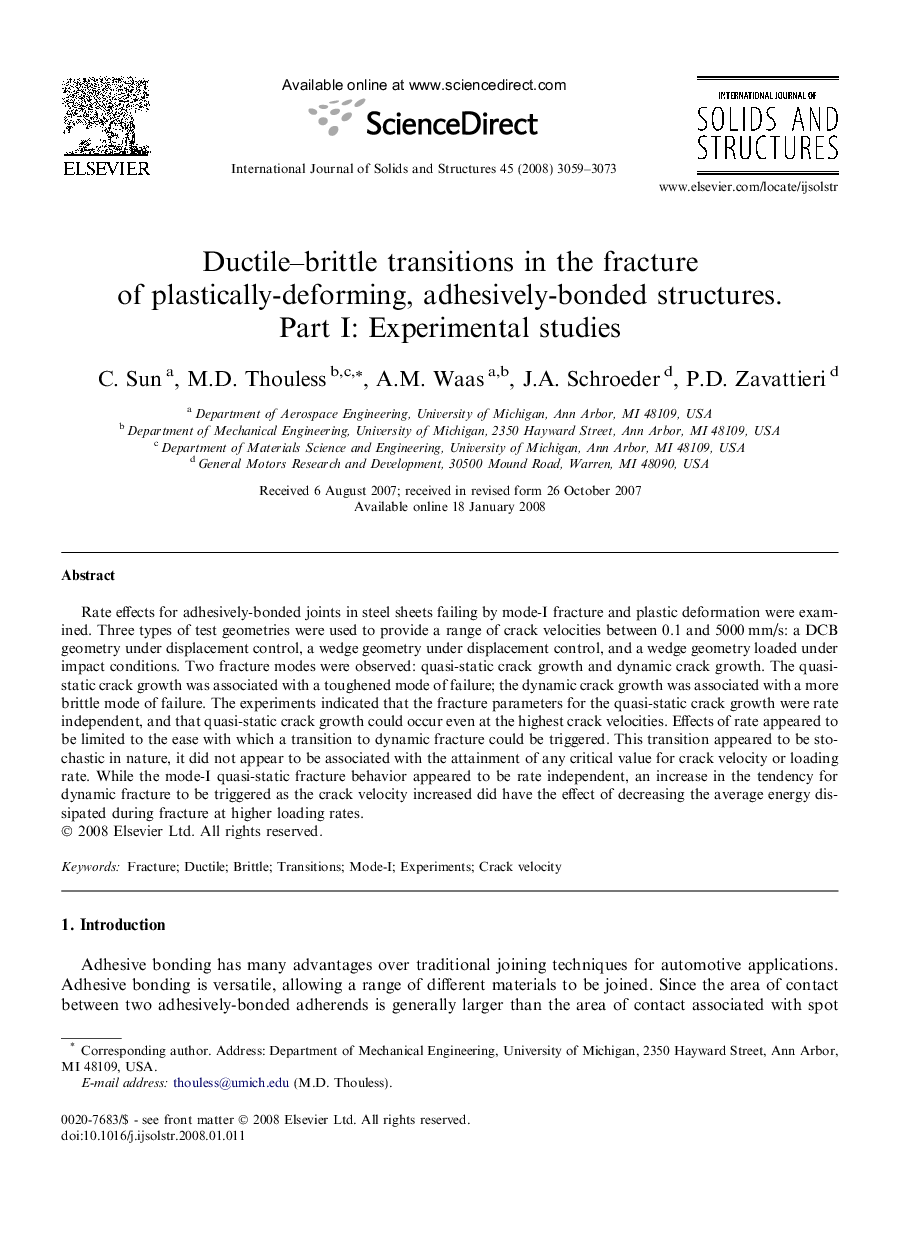| Article ID | Journal | Published Year | Pages | File Type |
|---|---|---|---|---|
| 279891 | International Journal of Solids and Structures | 2008 | 15 Pages |
Rate effects for adhesively-bonded joints in steel sheets failing by mode-I fracture and plastic deformation were examined. Three types of test geometries were used to provide a range of crack velocities between 0.1 and 5000 mm/s: a DCB geometry under displacement control, a wedge geometry under displacement control, and a wedge geometry loaded under impact conditions. Two fracture modes were observed: quasi-static crack growth and dynamic crack growth. The quasi-static crack growth was associated with a toughened mode of failure; the dynamic crack growth was associated with a more brittle mode of failure. The experiments indicated that the fracture parameters for the quasi-static crack growth were rate independent, and that quasi-static crack growth could occur even at the highest crack velocities. Effects of rate appeared to be limited to the ease with which a transition to dynamic fracture could be triggered. This transition appeared to be stochastic in nature, it did not appear to be associated with the attainment of any critical value for crack velocity or loading rate. While the mode-I quasi-static fracture behavior appeared to be rate independent, an increase in the tendency for dynamic fracture to be triggered as the crack velocity increased did have the effect of decreasing the average energy dissipated during fracture at higher loading rates.
